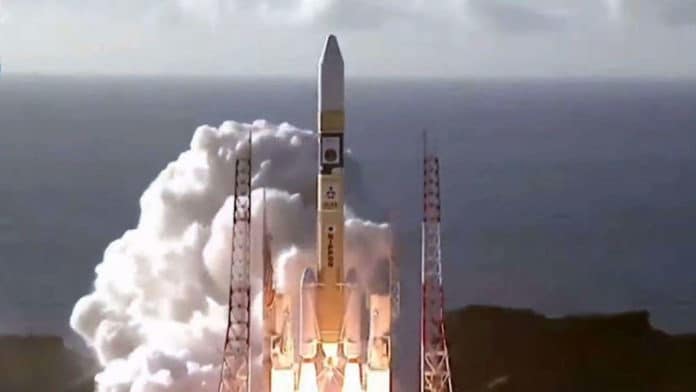Space exploration involves both human and robotic space flights to the Moon, Mars, and deeper into the solar system, as well as space-based observatories and other spacecraft to answer the question of whether there is life elsewhere in the universe. Although the United States, Russia, and China are the only countries capable of launching people into space, many other countries – such as the UK, India, France, Israel, and others – have traveled into space and independently launched satellites on their own indigenously developed launch vehicles.
Now, the United Arab Emirates has successfully launched its first interplanetary mission. Its first Mars-bound “Hope Probe” has flown to space from the Tanegashima Space Center in Japan on Sunday, after being postponed last week due to bad weather. Soon after the launch, the solid rocket booster successfully separated from the Mitsubishi H-IIA launch vehicle, and the probe has established two-way communication with the ground station at the Mohammed Bin Rashid Space Centre in Dubai. The UAE’s Space Agency says that the Hope probe is functioning properly and sending signals since launch.
Following a journey of several months, the Al Amal probe, as it is called in Arabic, is expected to enter the Red Planet’s orbit in February 2021. Once there, the probe will provide a complete picture of the Martian atmosphere. It will study its lower layers and the loss of hydrogen and oxygen gases into space over the span of one Martian year.
The Hope Probe has been created since 2014 as part of the Emirates Mars Mission program, conducted by the United Arab Emirates, and is aimed at enriching the capabilities of Emirati engineers and increasing human knowledge about the Martian atmosphere. Mohammed bin Rashid Space Centre, in conjunction with the University of Colorado Boulder, Arizona State University, and University of California, Berkeley, is responsible for the execution and supervision of all stages of the design, development, and launch of the probe.
The Hope probe is compact and cubic in shape and structure, with a mass of 1,350 kilograms, including fuel. It uses two 900-watt solar panels to charge its batteries, and it communicates with Earth using a high-gain antenna with a 1.5 meters wide dish. The spacecraft is equipped with star tracker sensors, six 120-N thrusters, and eight 5-N reaction control system (RCS) thrusters.
The Emirates Mars Mission is one of three ongoing projects towards Mars, along with Tianwen-1, from China, and Mars 2020, from the United States. These programs take advantage of a period when Earth and Mars are closer together, about 57 million kilometers from each other, making the journey a little bit shorter.
